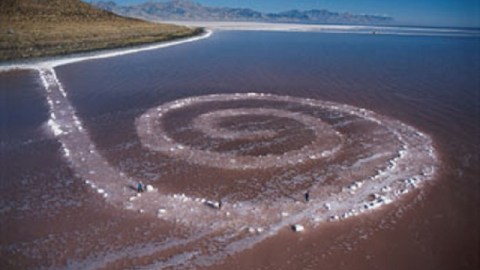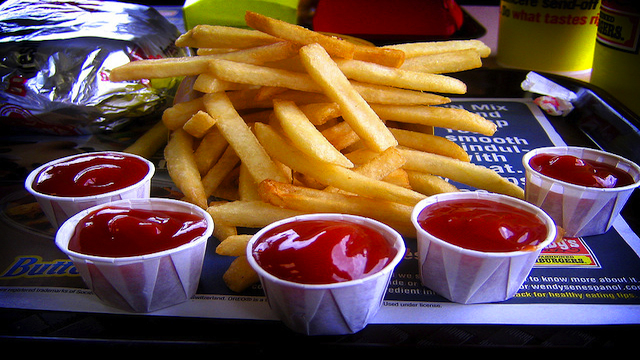How Public Art Exists More in Our Minds than in Some Place

In the wake of the Dr. King Memorial kerfuffle, I’ve been thinking more and more of how public art is a state of mind as much as a physical thing in a physical place. In an article in the inaugural issue of Public Art Dialogue, Joshua Fisher argues that Gutzon Borglum’s Mount Rushmore National Memorial and Robert Smithson’s Spiral Jetty exemplify this dual nature of public art, specifically in their relationship to the idea of American “Manifest Destiny.” By examining what Borglum said in his sculpture versus what his “antithesis” Smithson said in his earth art, Fisher sheds new light on each work and provides a template for analyzing the MLK monument and those that will follow.
“The most crucial decision Gutzon Borglum made concerning his Mount Rushmore National Memorial came before he had even chosen the site of his magnum opus, let alone applied his dynamite and chisels,” Fisher writes in “Empire Makers: Earth Art and the Struggle for a Continent.” Doane Robinson, a South Dakota State Historian, invited the sculptor to the site to suggest he sculpt Western heroes such as Lewis and Clark, Buffalo Bill Cody, Red Cloud, and Sacajawea, Fisher explains. Instead, Borglum selected national rather than regional heroes, beginning with George Washington and then adding, according to Borglum’s journal, “a group of the Empire Makers: Jefferson, Lincoln, Roosevelt.” Continuing the imperialist theme, and adding insult to injury, Borglum blasted his “Empire Makers” right into the Black Hills that the local Lakota Indians “believed their ancestors emerged from the underworld,” Fisher writes. Thus, “Mount Rushmore was more than just a case of the white man dwelling where the Lakota dwelled; the white man was creating an artificial holy place where the Lakota had had their natural holy place,” Fisher continues. The imperialist symbolism of Mount Rushmore existed far beneath the presidential surface in its celebration of “Manifest Destiny.”
In contrast, Smithson’s Spiral Jetty denies the idea of “Manifest Destiny.” “At the Great Salt Lake, there is no such charade,” Fisher writes of Smithson’s selected site of the work. “Trapped in the salt flats are not just the remains of oil-drilling equipment, but also the remains of once-powerful ideals, ideals now so outdated that they might as well be prehistoric.” Whereas Mount Rushmore’s built to last (and maybe even outlast the ideas it celebrates), Spiral Jetty “submerged, re-emerged, eroded, covered in salt crystals that dissolve again in the rain… proceeds with the rest of the universe in its insistent temporal march towards entropic maximum,” Fisher argues, as ephemeral as empires. Mount Rushmore argues for American exceptionalism, whereas Spiral Jetty counters with the Second Law of Thermodynamics—namely, things fall apart, including the American empire, eventually.
Aside from the persuasiveness and fascination of Fisher’s argument, I can’t help shake the foundation of his argument that public art exists as much in the mind as in physical space. In fact, public art may exist more in the mind than as a physical entity. How many people do you know have seen Mount Rushmore in person? I haven’t, but I’ve seen hundreds of pictures of it since childhood. I’ve never seen Spiral Jetty or Walter De Maria’s Lightning Field, but I’ve thought about them and read the thoughts of others about them. So, when people think about the MLK monument with its Chinese sculptor and Chinese pink granite construction and ask what the big deal is, the “big deal” is how those elements work in the mind rather than in the physical work itself. The fact that the MLK memorial may have been “Made in China” irks not because of its effect on the sculpture, but rather because of its effect on the minds of those who think about what it means today, and tomorrow.





